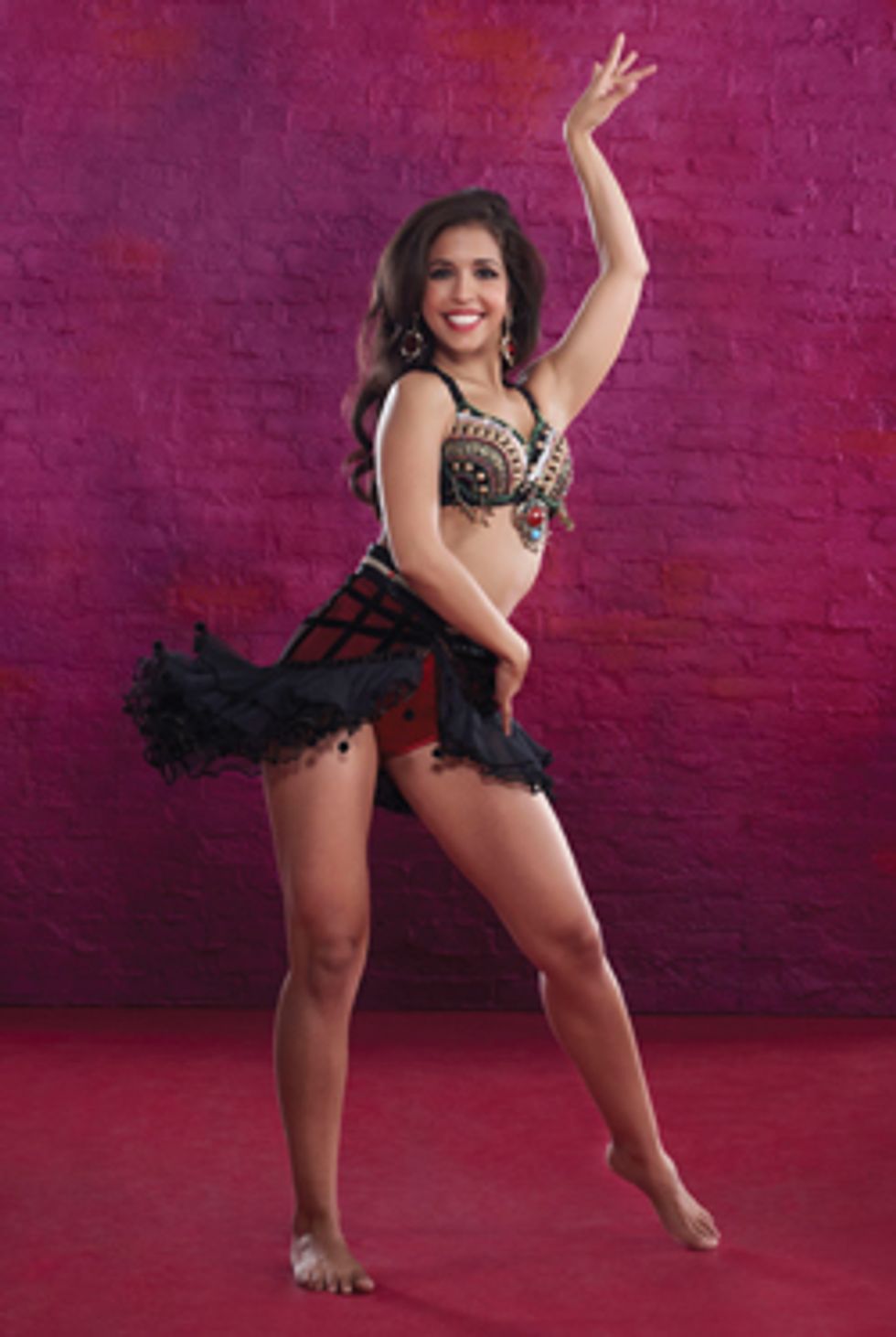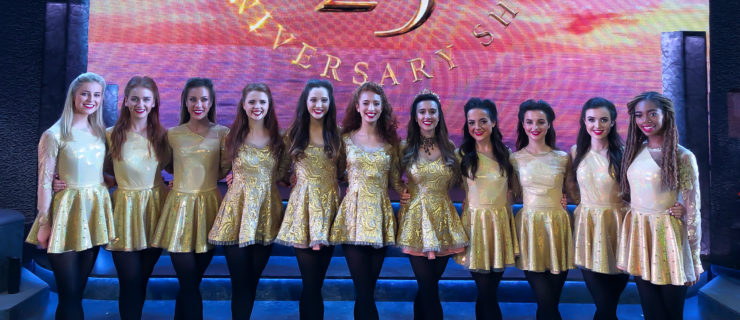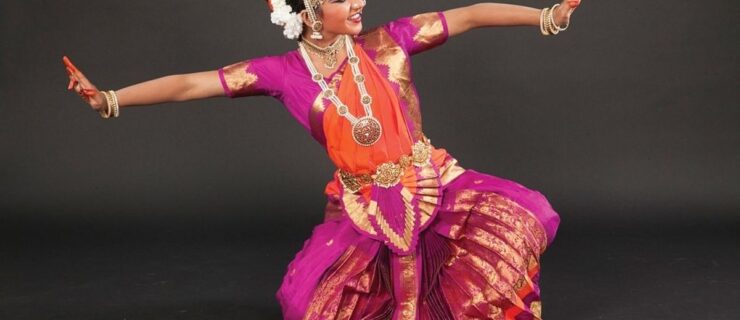The Belly Dance Difference

Janelle Issis stood out in the “So You Think You Can Dance” Season 9 Top 20 for being the show’s only belly dancing contestant. (Mathieu Young/FOX)
Among thousands of contemporary dancers in booty shorts and sports bras, Janelle Issis stepped up to audition for “So You Think You Can Dance” Season 9 rocking a flowing blue and red skirt and a jewel-encrusted top. The judges instantly sat up straighter. Then Janelle started dancing. Her hips moved at lightning speed and her undulating torso was snakelike. “You’re a star,” said judge Mary Murphy. “You’re just fascinating. We want to watch you.” Behold, the power of belly dance.
Janelle, a Palestinian dancer from Birmingham, AL, is also trained in jazz, tap, contemporary and hip hop, but belly dancing is what made her stand out from the crowd—and got the “SYTYCD” judges to put her in the show’s Top 20. Janelle describes the style as one that “celebrates femininity. It inspires girls to be self-confident. It’s more than just a sensual dance. With an upbeat song, it’s cute or happy, and with more expressive music, it shows heavy emotions.”
Originating in the Middle East, belly dance’s movement stems from the torso and includes graceful positions of the head and arms, contractions, isolations and a wide range of hip movements. It has the power to transform your dancing, your body and your career. Dance Spirit talked to experts to find out what this sultry style can do for you.
Strengthen and Tone Your Body
No matter how fit you think you are, expect to feel sore after your first belly dance class. Those hip and vertebrae movements may look tiny, but they’re hard work—and six-pack abs are just the beginning of the payoff. Belly dancers often work in plié, targeting the quadriceps, hamstrings and glutes. Janelle adds, “All the arm and shoulder movements initiate from—and strengthen—your back.”
Toning your body with belly dance will help you in other styles, too. Countless hip drops and figure eights will strengthen the muscles around your hips, improving your balances in ballet class. Plus, gentle undulations will develop a greater range of motion in your spine, increasing the flexibility of your back. This will make smooth moves like body rolls in hip-hop or jazz class much easier.
Fine-Tune Your Coordination and Musicality
Belly dancing is all about layers, so your hips may be moving much faster than your upper body. “You develop an ability to focus on multiple parts of your body doing different things at the same time,” Janelle says. The music used for belly dance is complex as well, often involving several rhythms in one song. “Eventually you’ll hear all of them and process each one separately,” says Layla Luna, founder of Layla and the Lotus Dancers and belly-dance teacher at EDGE Performing Arts Center in L.A. “The music you hear in jazz class will seem simple after listening to belly dancing music.” To help students develop complex musicality, Amira Mor, artistic director of the Amira Mor Performing Arts Center and instructor at Broadway Dance Center in NYC, ends her classes by asking them to improvise. “Choosing which strand of the music to follow with your body will make you confident in your decisions,” she says.

Teen belly dancers perform with Get Bent Arts & Recreation in British Columbia, Canada. (courtesy Get Bent Arts & Recreation)
Expand Your Career Options
Luna was a gymnast and classically trained ballet dancer before she began belly dancing at age 22. Suddenly, a plethora of new opportunities opened up. She performed in concerts, music videos and private parties, taught classes and even trained celebrities, like Natasha Bedingfield. “Since belly dancing is for people of all ages and backgrounds, it’s accessible,” she says. “People everywhere appreciate it.”
For dancers eager to get hired, adding new skills to your resumé is never a bad idea. Janelle finds that surprising directors and choreographers with belly dancing skills in auditions gives her a leg up on the competition. “It helps me stick out and get noticed,” she says. She especially likes to sneak it into her dancing when asked to freestyle.
Above all else, belly dancing is about having fun. Though it’s hard to master and may feel unfamiliar at first, the key is to stop worrying about what you look like and let go.
Want to Try Belly Dancing?
To get you started, DS asked instructor Amira Mor to break down two basic moves.
Vertical Figure Eights
•Plié in parallel first position, with abs engaged and shoulders back.
•Use your oblique muscles to lift your right hip. Your right heel should rise, and your right knee should be slightly straighter than your left.
•Slide that hip to the right, away from your body. Make sure it’s
still higher than the left hip.
•Bring the right hip down, putting your right heel on the floor and taking a deeper plié in your right leg. At the same time, start lifting your left heel off the ground and your left hip up.
•Push your left hip to the left side. Then, drop the heel and hip down.
Mor says: “Your hips should be forming a smooth figure eight.”
Chest Undulation
•Begin in parallel first position. Imagine you’re standing with your back a few inches in front of a wall.
•Keeping your shoulders pulled back, bring your rib cage forward, then up toward the ceiling.
•Roll through your spine—pushing your vertebrae back one at a time from top to bottom. At the end, your whole back should be flat against the “wall.”
•Release your pelvis against the “wall” and bend your knees to finish.
Mor says: “Keep your shoulders as still as possible. Focus on isolating your rib cage.”




